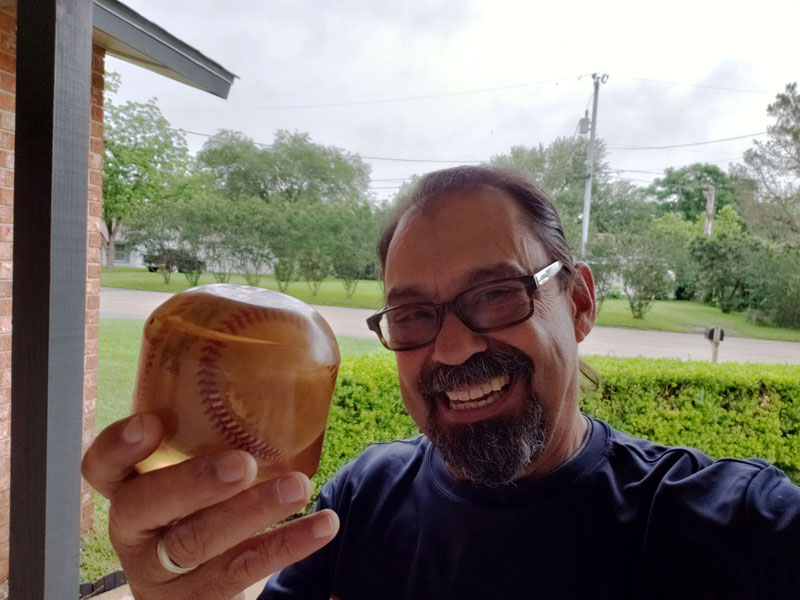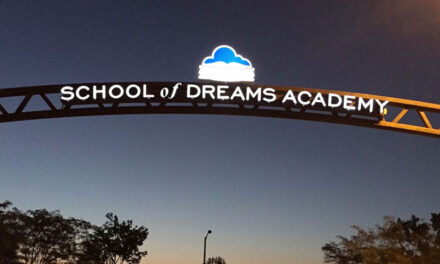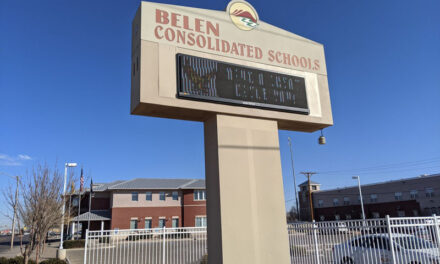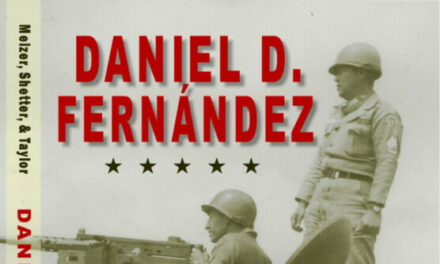It was Monday afternoon, March 31, 1969. Twelve-year-old Mike Garcia and his friends could not have been more excited. After months of watching the construction of Albuquerque’s new $1.4 million sports stadium, the day had arrived at last.
The field where they used to hunt for lizards, chase rabbits and shoot BB guns had been transformed into a modern professional baseball field. The stadium’s first game had begun before a crowd of more than 13,000, including Ross Lovato, a 19-year-old fan from Belen. It was one of the largest crowds to ever see a baseball game in Albuquerque history.
Adding more excitement to an already exciting day, Willie Mays and his San Francisco Giants were playing the Cleveland Indians in an exhibition game. In fact, the great Willie Mays was to have the distinction of being the first player to bat at the new stadium.
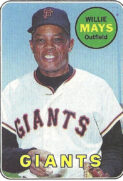
Willie Mays’s 1969 baseball card.
It was a beautiful day. After Willie, the “Say Hey Kid,” played the outfield and batted three times, he declared that the new stadium was “the greatest minor league ball park I’ve ever played in.”
His teammates, including a future Hall of Fame slugger named Willie McCovey, agreed. What could ever go wrong at such a remarkable place at such a historical event?
Things go wrong
Mike Garcia had been born in Albuquerque in 1956 and lived no more than a mile east of the new stadium. Mike and his friends easily rode the distance on their Stingray bikes, complete with banana seats and high handlebars.
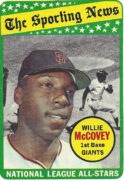
Willie McCovey’s 1969 baseball card.
Coincidentally, Mike’s large extended family included many members of the Jaramillo and Gabaldon families in Belen. His grandparents, Nestor and Rachel Jaramillo, had owned land on River Road. Mike spent many summers in Belen, visiting his family while working and playing along with his four brothers and two sisters.
But Mike was nowhere near Belen on March 31, 1969. At the game, he and his buddies from Southeast Albuquerque had heard that Willie Mays and Willie McCovey were going to leave the game early and depart from the stadium in the seventh inning. A police car waited to escort them back to their hotel.
Mike and his friends waited by Gate No. 4, down the right field line. They hoped to at least catch a glimpse of the baseball legends as they walked by. With any luck they might even get the players’ autographs.
As Mays and McCovey appeared, a batter still in the game hit a hard line drive into foul territory. With the ball headed straight for Mike, someone yelled, “Look out!” But Mike had no time to evade the missile heading straight towards him. The ball hit him square in his right eye. Mike fell to the ground, his face bleeding.
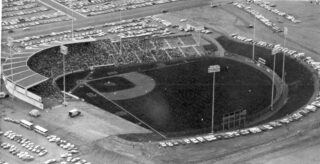
Albuquerque’s Sports Stadium shortly after it opened in 1969.
Ross Lovato, who happened to be standing nearby, rushed to Mike’s aid, as did Mays, while McCovey ran to get the Giants’ trainer. Mays took off his warm-up jacket and put it under Mike’s head. The boy was unconscious as the police lifted him up and placed him in their patrol car.
Mays and McCovey joined Mike in the car but Mays forgot about his jacket. Ross picked it up and brought it to Mays just before the police car took off. Someone told Mays that Mike would be “the biggest man in school tomorrow after using your warm-up jacket.” Mays replied that all he cared about was Mike’s recovery.
The first thing Mike remembered after blacking out was moments later as he was sped off in the police car and heard the car’s loud siren. The police rushed him to Bernalillo County Medical Center’s emergency room and, later, transferred him to Presbyterian Hospital for x-rays.
After several hours, doctors informed Mike’s parents that the x-rays showed that no bones had been broken. Dr. Jack Redman, the Garcias’ family doctor, told the press, “He’ll be all right. I delivered him, you know.”
Mike was released to his parents’ care with the advice that he stay off his feet for a while. Mike suffered blurred vision for a few days before fully regaining his sight.
Meanwhile, Mike’s buddy, Greg Russell, had retrieved the ball that hit Mike in the eye. The ball was scuffed, but did not have any signs of Mike’s blood. At some point, Willie Mays had signed the ball, “Mike, With best wishes. Willie Mays.” Mays later sent Mike a get-well note on Candlestick Park stationery. Having the autographed ball and get-well note was almost worth the enormous black eye and considerable discomfort Mike had suffered.
Instant celebrity
Despite his doctors’ advice, Mike couldn’t wait to return to Wilson Junior High School the next day. He was an instant celebrity, with many new friends and much female attention.
He had recently been cut from the school’s baseball team (other players were much bigger), but he was soon invited to rejoin the team. Mike politely declined, but did play the infield for a Babe Ruth league team that summer.
Mike became a celebrity in the whole city when local newspapers reported his mishap, printing photos of him, his friends and his autographed baseball. Mike thinks his shiner might have drawn additional interest in Albuquerque’s new stadium at the corner of University and Stadium boulevards (now Avenida Cesar Chavez).
Pat McKernan was especially kind to Mike. McKernan, who owned the Albuquerque Dukes baseball club that called the new sports stadium home, vowed that Mike would never have to pay for a ticket to a ball game in his life.
Mike enjoyed many free games, just showing up at the box office and giving his name. Once, when the box office staff did not recognize him, Mike mentioned McKernan’s promise. Within moments, the baseball executive came down from his office to personally escort Mike and his friends to their seats. The generous team owner even provided food and drinks on the house.
Mike’s father, Tom Garcia, enjoyed a part of his son’s 15 minutes of fame. Tom’s fellow workers at Sandia Labs were duly impressed when he brought the autographed ball to work. To make sure that it was well preserved and never played with again, Tom had the ball encased in Plexiglas.
Later life
Mike graduated from Highland High School in 1973. Within a month of graduation, he joined the Navy. He had done some amateur boxing in Albuquerque and fought some matches while in the service. He did well, but was knocked out twice.
As bad luck would have it, in one fight, Mike’s opponent knocked him out with a powerful left hook to the same eye that had been struck by the famous foul ball. Mike says that the punch was even harder than the foul ball he’d been hit with at the sports stadium. He didn’t miss any school after the foul ball hit him. He missed two days of work after he was floored in the Navy.
Mike served in the Navy for six years before reentering civilian life. He’s had several interesting jobs and now lives with his wife, Helen, outside Austin, Texas.
Mike never met Willie Mays or Willie McCovey again, but he became more of a Giants fan after the team’s two biggest stars came to his rescue in 1969. With a current job that takes him to all parts of the country, he enjoys visiting old traditional stadiums such as Fenway Park in Boston as well as more modern ones like Minute Maid Park in Houston.
Mike continues to treasure his souvenir baseball. He is contacted about his encounter with Willie Mays and the infamous foul ball at least once a year. Sports journalist Toby Smith wrote an article in the Albuquerque Journal to mark the incident’s 20th anniversary in 1989. Many baseball collectors have offered to buy the ball. The highest offer has been $5,000.
But Mike is not interested in selling his prized possession. Not knowing if his descendants will treasure it as he has, he has thought that its proper place may be at the new Isotopes Stadium. After all, this year marks the 50th anniversary of both the opening of the now-replaced sports stadium and the treacherous foul ball that hit a young spectator in the eye.
Maybe it is time for a bit of Albuquerque baseball history to return home and be enshrined where its long journey all began.
(La Historia del Rio Abajo is a regular column about Valencia County history written by members of the Valencia County Historical Society since 1998.
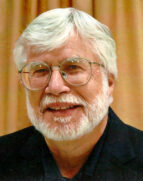
Richard Melzer
Biographer
The author of this month’s column wishes to thank Ross Lovato, who first brought this story to the author’s attention, and Mike Garcia, who lived it.
Opinions expressed in this and all columns of La Historia del Rio Abajo are the author’s only and not necessarily those of the Valencia County Historical Society or any other group or individual.)
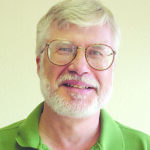
Richard Melzer, guest columnist
Richard Melzer, Ph.D., is a retired history professor who taught at The University of New Mexico–Valencia campus for more than 35 years. He has served on the board of directors of the Valencia County Historical Society for 30 years; he has served as the society’s president several times.
He has written many books and articles about New Mexico history, including many works on Valencia County, his favorite topic. His newest book, a biography of Casey Luna, was published in the spring of 2021.
Those interested in joining the Valencia County Historical Society should contact Dr. Melzer at [email protected].
